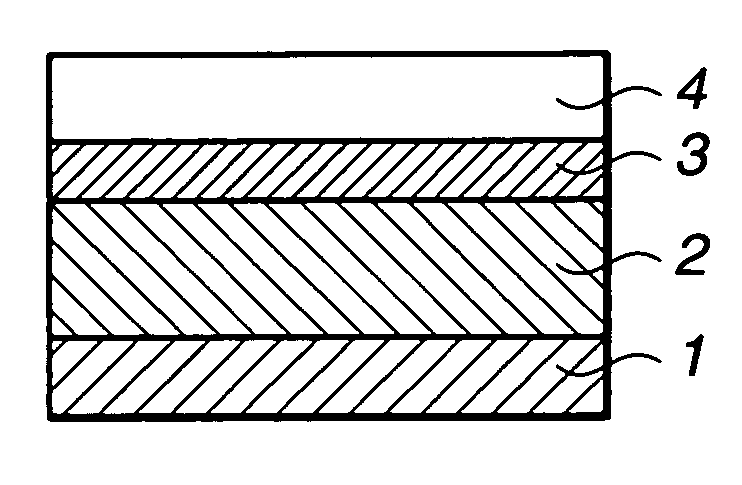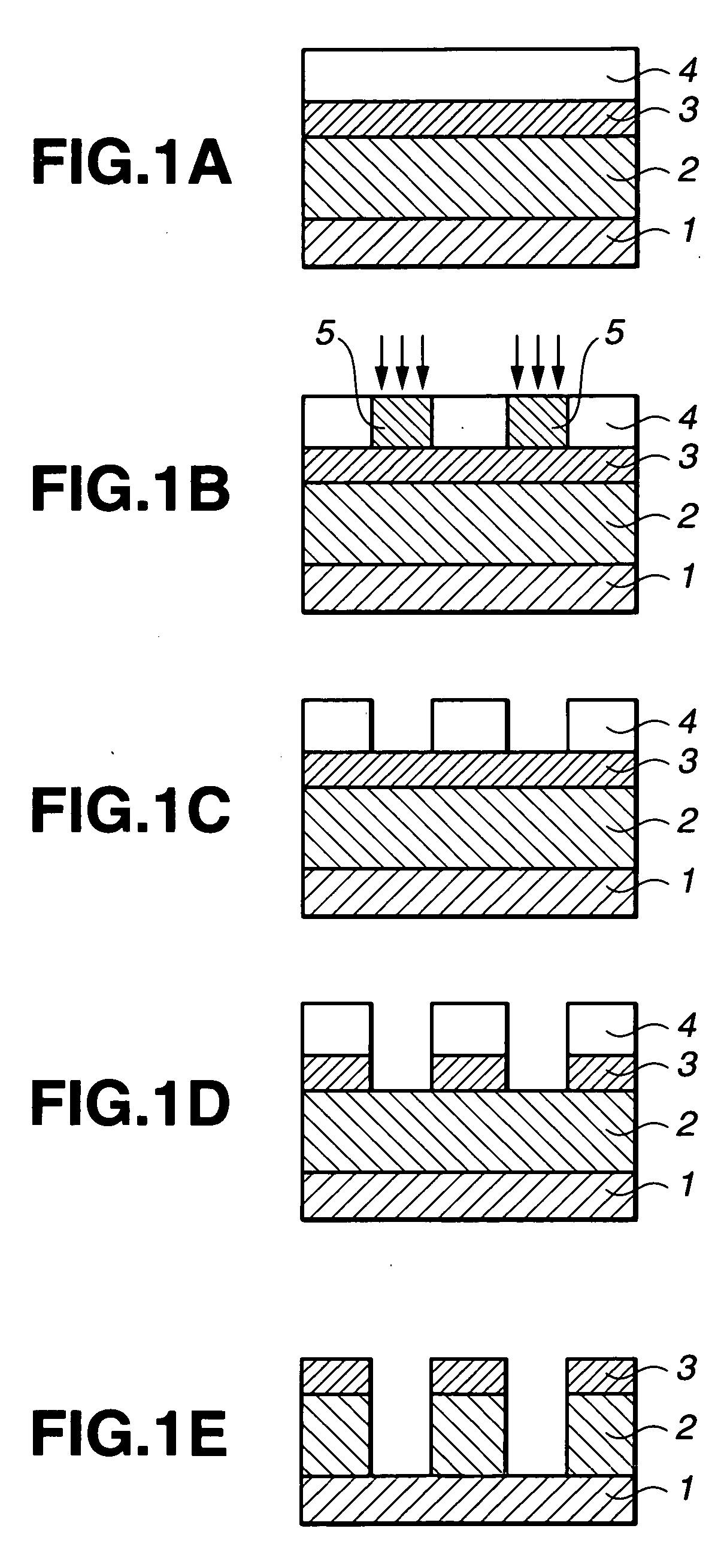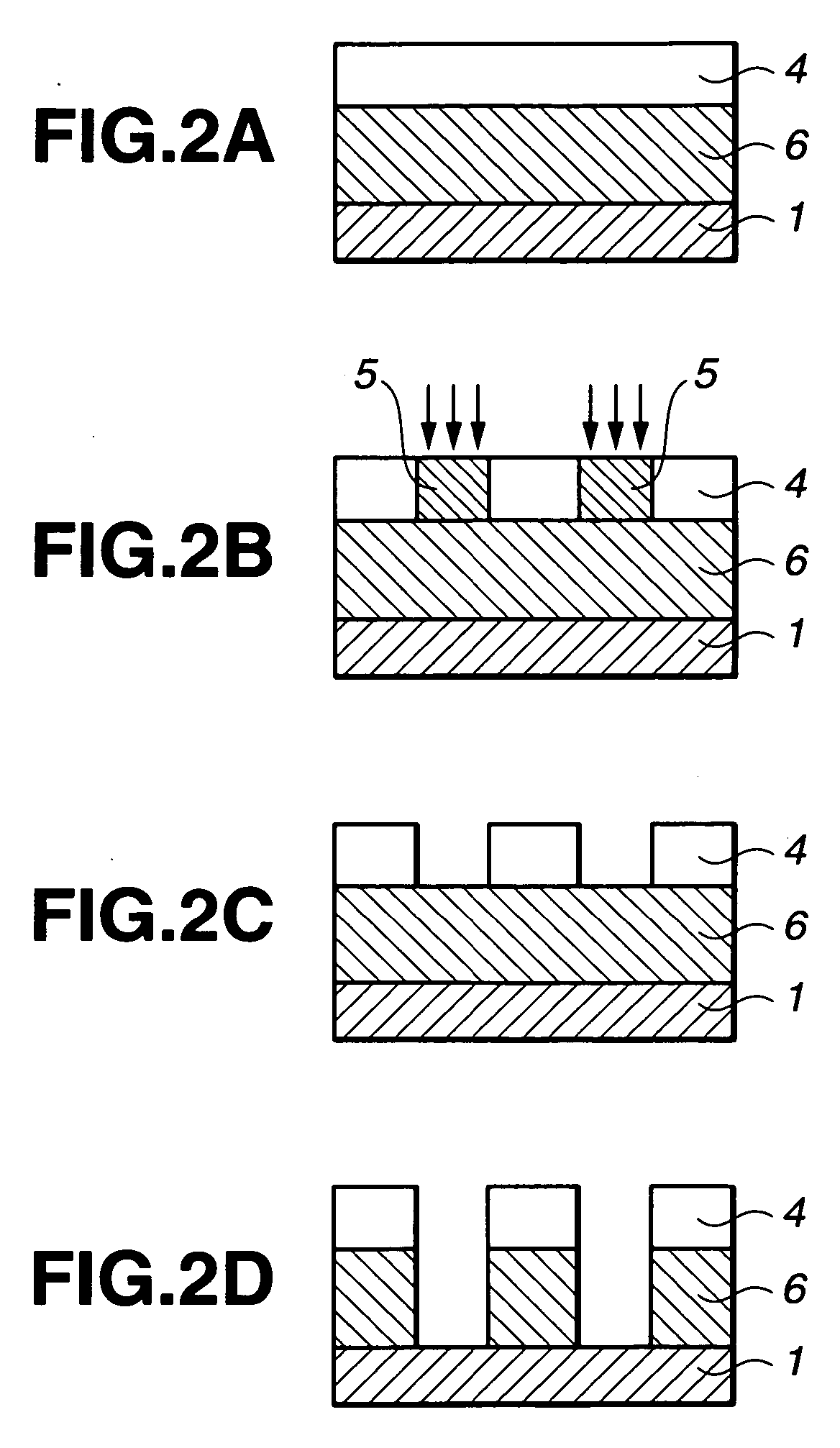Polymer, resist composition and patterning process
a technology of composition and patterning, which is applied in the field of polymer, resist composition and patterning process, can solve the problems of inability to use resist resin as the base resin, inability to ensure transparency, and inability to achieve the transmittance of polyhydroxystyrene, etc., to achieve satisfactory oxygen plasma etching resistance, easy formation, and excellent sensitivity and resolution
- Summary
- Abstract
- Description
- Claims
- Application Information
AI Technical Summary
Benefits of technology
Problems solved by technology
Method used
Image
Examples
synthesis example 1
Synthesis of 1-(2-tetrahydrofuranyl)cyclopentyl methacrylate / 1-tris(trimethylsilyl)silylethyl methacrylate / p-hydroxystyrene copolymer (10:15:75), Polymer 1
[0198] In a 1-liter flask, 22.4 g of Monomer 1, 64.8 g of Monomer 5 and 90.0 g of 4-hydroxystyrene were dissolved in 300 ml of THF. The reactor was cooled to −70° C., and vacuum extraction and nitrogen blow were repeated three times until the system was thoroughly purged of oxygen. In the nitrogen atmosphere, 5 g of the initiator AIBN was added to the flask, which was heated to 60° C., whereupon polymerization reaction was conducted for 24 hours.
[0199] The polymer product was worked up by pouring the reaction mixture into a solvent mixture of hexane / ether (3 / 2) for precipitation. The polymer was separated. There was obtained 132 g of a white polymer that is a 1-(2-tetrahydro-furanyl)cyclopentyl methacrylate / 1-tris(trimethylsilyl)-silylethyl methacrylate / p-hydroxystyrene copolymer, designated Polymer 1.
[0200] Polymer 1 had a wei...
synthesis example 2
Synthesis of 1-(7-oxanorbornan-2-yl)cyclopentyl methacrylate / 1-tris(trimethylsilyl)silylethyl methacrylate / p-hydroxy-styrene copolymer (8:15:77), Polymer 2
[0201] In a 1-liter flask, 25.4 g of Monomer 2, 64.8 g of Monomer 5 and 90.0 g of 4-hydroxystyrene were dissolved in 300 ml of THF. The reactor was cooled to −70° C., and vacuum extraction and nitrogen blow were repeated three times until the system was thoroughly purged of oxygen. In the nitrogen atmosphere, 5 g of the initiator AIBN was added to the flask, which was heated to 60° C., whereupon polymerization reaction was conducted for 24 hours.
[0202] The polymer product was worked up by pouring the reaction mixture into a solvent mixture of hexane / ether (3 / 2) for precipitation. The polymer was separated. There was obtained 130 g of a white polymer that is a 1-(7-oxanorbornan-2-yl)cyclopentyl methacrylate / 1-tris(trimethyl-silyl)silylethyl methacrylate / p-hydroxystyrene copolymer, designated Polymer 2.
[0203] Polymer 2 had a weig...
synthesis example 3
Synthesis of 1-(7-oxanorbornan-2-yl)cyclopentyl methacrylate / 3-oxo-2,7-dioxatricyclo[4.2.1.04.8]-9-nonane methacrylate / 1-tris(trimethylsilyl)silylethyl methacrylate / p-hydroxy-styrene copolymer (8:25:15:52), Polymer 3
[0204] In a 1-liter flask, 25.4 g of Monomer 2, 33.6 g of Monomer 6, 64.8 g of Monomer 5 and 62.4 g of 4-hydroxystyrene were dissolved in 300 ml of THF. The reactor was cooled to −70° C., and vacuum extraction and nitrogen blow were repeated three times until the system was thoroughly purged of oxygen. In the nitrogen atmosphere, 5 g of the initiator AIBN was added to the flask, which was heated to 60° C., whereupon polymerization reaction was conducted for 24 hours.
[0205] The polymer product was worked up by pouring the reaction mixture into a solvent mixture of hexane / ether (3 / 2) for precipitation. The polymer was separated. There was obtained 139 g of a white polymer that is a 1-(7-oxa-norbornan-2-yl)cyclopentyl methacrylate / 3-oxo-2,7-dioxa-tricyclo[4.2.1.04.8]-9-no...
PUM
| Property | Measurement | Unit |
|---|---|---|
| Nanoscale particle size | aaaaa | aaaaa |
| Composition | aaaaa | aaaaa |
| Sensitivity | aaaaa | aaaaa |
Abstract
Description
Claims
Application Information
 Login to View More
Login to View More - R&D
- Intellectual Property
- Life Sciences
- Materials
- Tech Scout
- Unparalleled Data Quality
- Higher Quality Content
- 60% Fewer Hallucinations
Browse by: Latest US Patents, China's latest patents, Technical Efficacy Thesaurus, Application Domain, Technology Topic, Popular Technical Reports.
© 2025 PatSnap. All rights reserved.Legal|Privacy policy|Modern Slavery Act Transparency Statement|Sitemap|About US| Contact US: help@patsnap.com



